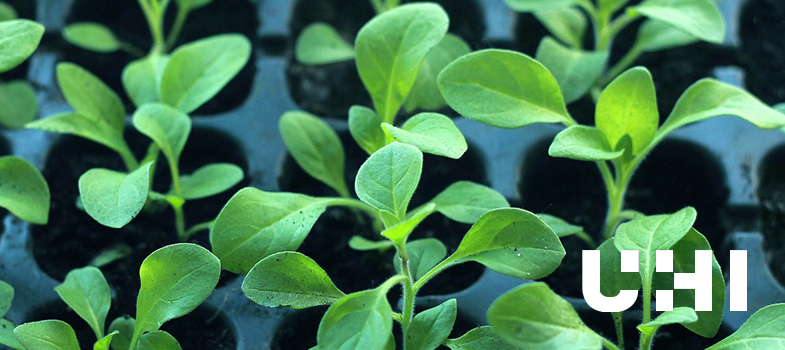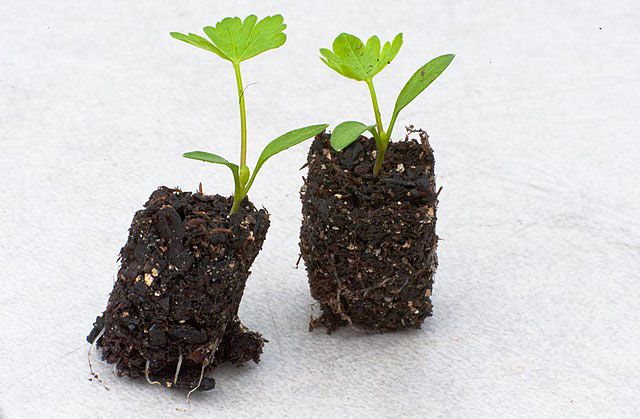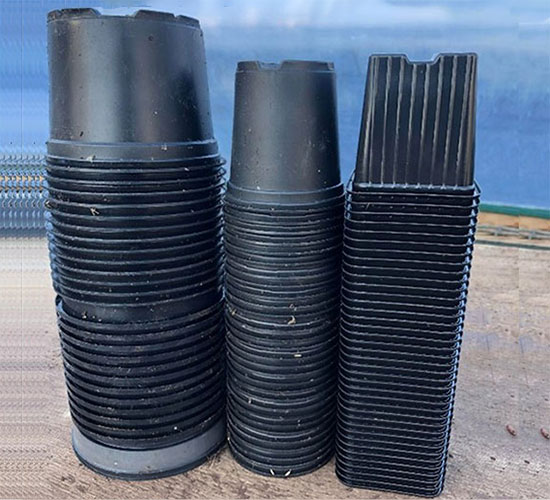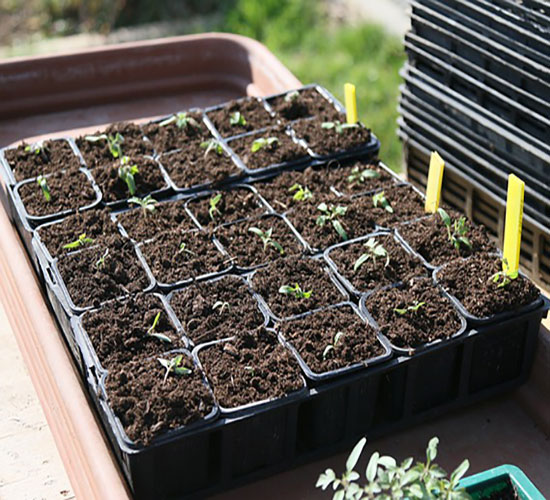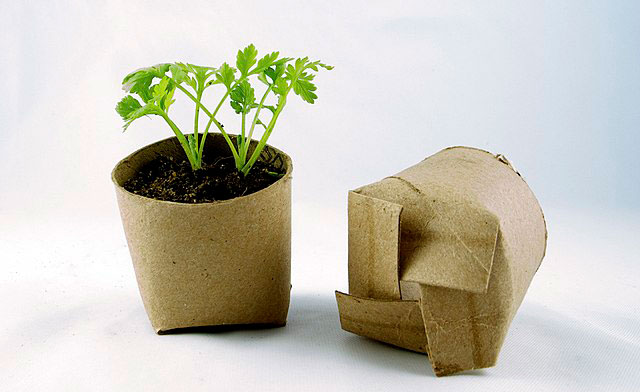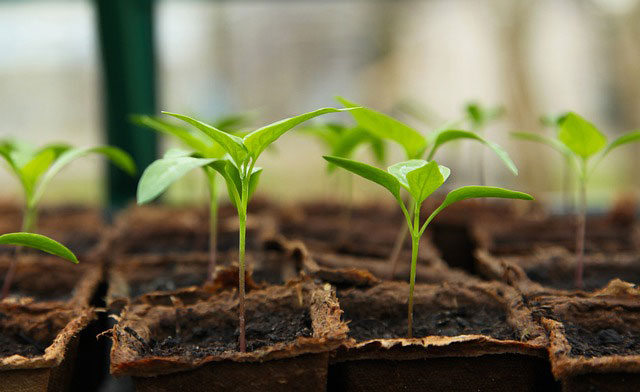Part 1: Propagation by seed
3. Containers
Simple, shallow trays with holes in the bottom for drainage.
| Pros | Cons |
|---|---|
|
|
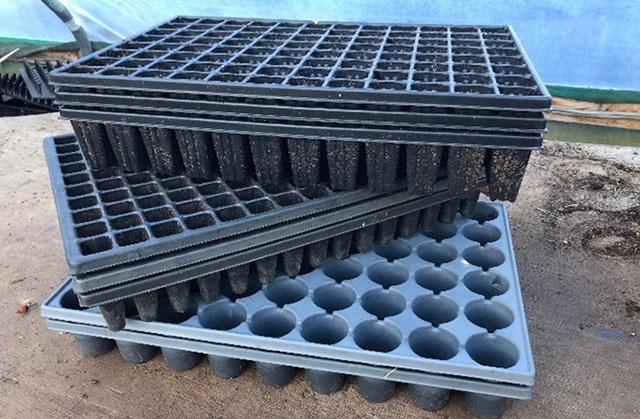
Amber Crowley / public domain
Trays formed with sections in, called cells. Designed so that one plant grows per cell. The resulting seedling with its round or square clump of compost attached is called a ‘plug’ or a ‘plug plant’.
| Pros | Cons |
|---|---|
|
|
Individual containers, sometimes put into carrier trays for ease of handling.
| Pros | Cons |
|---|---|
|
|
Individual plant containers made from (usually) recycled paper. They can be hand made by folding paper or toilet roll tubes or bought from commercial suppliers who form them from paper pulp.
| Pros | Cons |
|---|---|
|
|
Research suppliers of seed trays, cell trays and different types of pots online. See how the availability and prices compare. Which would you choose to use if you were to start a commercial propagation nursery?
